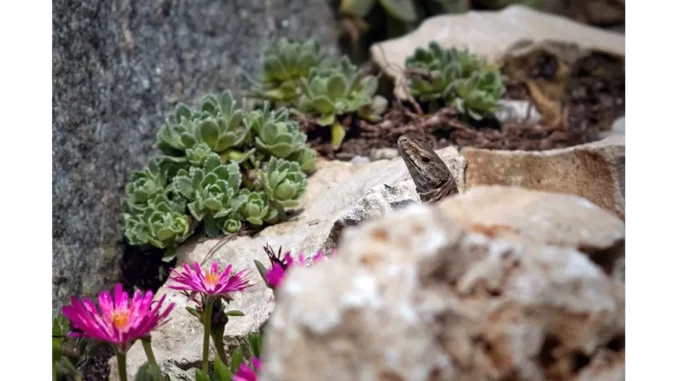
In the charming suburb of Eastwood, I had the pleasure of meeting Laura Thompson, an avid gardener with a particular passion for rock gardens. Her picturesque backyard felt like a serene oasis, where carefully chosen plants and stones coexisted in perfect harmony. As we settled into the sunny corner of her garden, Laura began sharing her insightful journey into the world of rock gardening, highlighting the importance of selecting suitable plants for such unique environments.
Turn your garden into your private retreat, enjoyable day or night complements of Elegancia.homes.
“Rock gardening is more than just aesthetics,” Laura explained, her eyes scanning the vibrant scene around us. “It’s about choosing the right plants that can withstand harsh conditions and limited soil. You have to think about drought-resistance and adaptability.” This principle was the cornerstone of Laura’s rock garden design, and her thoughtful plant selection was a testament to her dedication.
Understanding the Environment
Laura mentioned that the first step in creating a successful rock garden is understanding the environment in which it would thrive. “You see,” she pointed out, “rock gardens often face challenging conditions—poor soil, lack of water, and intense sunlight. It’s crucial to choose plants that can handle such stressors.”
Her approach was to use drought-resistant plants, which not only survived but thrived in these circumstances. This choice was both practical and environmentally conscious, reducing the need for constant watering and maintenance.
Choosing the Right Plants
Laura’s garden was a delightful blend of textures and colours, achieved by her thoughtful selection of plants. “I always start with succulents,” she said, gesturing towards a cluster of vibrant Green Aeonium and the striking Golden Barrel Cactus. “They store water in their leaves, making them incredibly resilient.”
These succulents, with their sculptural forms and varied hues, added both beauty and practicality to her garden. “The Golden Barrel Cactus,” Laura pointed out, “is a perfect focal point with its bright yellow flowers and spiky texture contrasting against the smooth rocks.”
Beyond succulents, Laura incorporated other drought-tolerant varieties like the whimsical Gollum Jade and the elegant Foxtail Agave. “These plants adapt well to rocky environments and require minimal care,” she noted, her hands delicately brushing the agave’s soft, green leaves.
Incorporating Native Species
Laura emphasized the importance of including native plants in her rock garden. “Native plants are naturally adapted to the local climate and soil,” she explained. “They require less water and attract local wildlife, like butterflies and bees.”
In her garden, the Rock Cress with its delicate white flowers and the hardy Creeping Thyme worked in concert to cover the ground, creating a tapestry of colour and fragrance. These choices not only enhanced the aesthetic appeal but also supported the local ecosystem.
The Art of Design
Laura’s rock garden was not just about plant selection; it was a carefully crafted design that played with height, texture, and colour. “I like to use rocks of different sizes to create levels,” she said, pointing to the tiered arrangement of stones and plants. “It adds depth and visual interest.”
Her garden was a testament to this philosophy, where each plant was meticulously placed to balance the overall composition. “The goal is to mimic nature,” Laura smiled, “to create a space that feels both wild and serene.”
Sustainability in Gardening
For Laura, rock gardening was as much about sustainability as it was about beauty. “We must consider water conservation,” she stressed. “That’s why I choose plants that don’t need an elaborate irrigation system.” Her choice of drought-resistant species was a reflection of her commitment to an eco-friendly garden.
“Overwatering can be more harmful than helpful,” she advised, highlighting the importance of understanding the specific needs of each plant. “It’s about finding that balance.”
Final Thoughts
As our conversation drew to a close, Laura’s passion for rock gardening was evident. Her thoughtful approach to selecting suitable plants ensured her garden was not only a visual delight but also a sustainable and low-maintenance landscape.
“Rock gardening is a journey,” she reflected. “It’s about embracing the constraints and working with nature to create something beautiful.” Her words resonated as I took one last look at her vibrant oasis, a testament to the art of resilience in gardening.
Through Laura Thompson’s insights, it’s clear that the key to a successful rock garden lies in thoughtful plant selection and a commitment to sustainability. For those looking to embark on their own rock gardening adventure, her advice serves as a valuable guide to creating a garden that thrives against all odds.
Sarah Dale


Be the first to comment